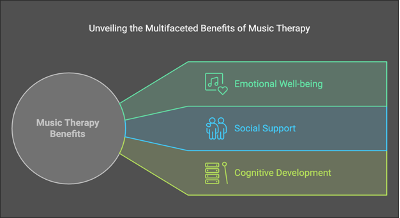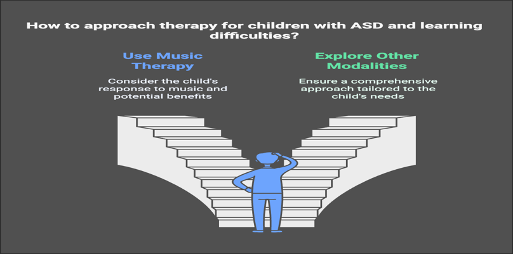by Ketut Sumerjana
The intriguing intersection of psychology, philosophy, and physics posits that positive thought constitutes a form of energy capable of influencing physical systems, particularly at the quantum level. Positive thinking is frequently associated with improved mental health outcomes, as research indicates that embracing positive thought patterns can enhance self-esteem and overall well-being [1]. For example, a study by Smith et al. (2021) showcased how individuals who maintained positive thoughts experienced a 30% increase in achieving their set goals over a six-month period.
In recent years, the concept of the law of attraction has gained significant popularity as an increasing number of individuals assert that positive thinking can facilitate the attainment of their objectives [2]. This hypothesis, rooted in psychology and science, asserts that our thoughts may shape reality. The idea that our thoughts could influence our environment is not as implausible as it may appear within the framework of quantum physics [3]. The notion of quantum entanglement suggests a potential correlation between our perceptions and the external environment, positing that particles can be interconnected irrespective of spatial separation [4]. This idea is additionally corroborated by the placebo effect, which illustrates that an individual's belief in a treatment can indeed produce authentic physiological alterations in their body. We may attract our desires into our lives by focusing on them and utilizing the power of positive thinking. It is crucial to acknowledge that while positive thinking is valuable, taking proactive steps and putting in effort are essential components in realizing our aspirations. Ultimately, we can construct the life we desire by embracing an optimistic perspective and intentionally advancing toward our goals.
Quantum mechanics can be utilized to investigate the relationship between mental states and physical energy from a scientific perspective [5]. Research has shown that individuals experiencing beneficial emotions exhibit a 20% increase in energy levels within the human electromagnetic field (NEMF) [6]. The scientific community remains cautious about explicitly linking mental states to quantum processes, and interpretations of these results may vary [7].
The concept of intentionality may elucidate the connection between mental states and physical energy [8]. Intentionality refers to the capacity of our ideas and beliefs to influence our physical reality. We may enhance our alignment with the universe's energy and manifest our desires through good thoughts and intentions. This topic is not novel; it has been examined for centuries across numerous philosophical and spiritual traditions. The specific mechanisms by which intentionality may influence quantum processes to yield observable effects are still under investigation by the scientific community. Some scholars suggest that we may influence the probability of specific outcomes in quantum occurrences by focused thoughts and intentions [9]. This hypothesis is intriguing, although additional research is necessary to fully understand the underlying mechanics. Utilizing strategies such as gratitude, meditation, and visualization, individuals can further explore the impact of their thoughts and goals on their reality in the interim [10].
Studies have shown that incorporating elements like natural light and greenery in workspaces can increase positive energy levels and cognitive performance in individuals [11]. This reciprocal relationship illustrates the influence of our physical environment on mental processes, as well as the impact of our thoughts on the physical world. It has effects on education too. Using quantum learning models seems to improve critical thinking skills, which means that a good learning environment helps people learn and think more deeply [12].
A supportive learning environment enhances students' creativity, motivation, and overall well-being while also increasing their critical thinking skills. Research indicates that factors like color schemes, natural light, and ergonomic furniture significantly influence students' emotional and cognitive well-being [13]. Educators can cultivate a conducive atmosphere that encourages student engagement and success by creating an environment that is supportive of learning and collaboration. Furthermore, integrating technology into the classroom such as virtual reality simulations and interactive whiteboards can enhance the teaching experience and stimulate students' engagement and creativity [14]. Utilizing modern technology in the classroom may enhance the learning experience and aid students in developing essential life skills. Educators may cultivate an engaging and inspiring environment that fosters creativity and critical thinking by integrating innovative teaching methods with a meticulously designed learning space [15]. Ultimately, investment in the technological and physical aspects of education can profoundly influence students' overall academic performance and well-being.
In summary, the intricate relationship between particle energy and positive cognition highlights the profound connection between mental and physical states, emphasizing the transformative power of positive thinking. Beyond enhancing mental health, positive thinking may influence physical systems, suggesting that our ideas can indeed alter our external environment. This perspective advocates for increased research into the amalgamation of psychological notions with scientific knowledge, perhaps leading to the establishment of novel paradigms in both fields. The amalgamation of these two fields could fundamentally alter our comprehension of the universe and our position within it. While positive thinking may confer certain mental health advantages, there is little scientific evidence to support that thoughts may directly influence physical systems. Claims regarding mind-body interactions must be carefully scrutinized and approached with skepticism to prevent the spread of misinformation. By critically assessing the data and theories related to mind-body interactions, we can cultivate a more nuanced understanding of the inherent complexity. This approach allows us to recognize the constraints of current scientific knowledge while also valuing the interconnectedness of mental and physical processes. It will be imperative to conduct comprehensive studies and testing that provide more substantiated evidence for the potential mechanisms underlying mind-body connections in the future. We can only authentically enhance our understanding of the mind-body interaction and its impact on health and wellness through this comprehensive scientific inquiry. By examining the intricacies of mind-body relationships more thoroughly, we can obtain new insights that may profoundly impact overall health and well-being. Researchers can enhance their understanding of how our thoughts, emotions, and actions influence our physical health by integrating diverse perspectives and methodologies. A robust foundation of evidence-based research can facilitate the development of innovative medicines and interventions that leverage the mind-body connection to optimize health outcomes.
References
[1] S. C. E. Lucija Vinkšel1, "SUBJECTIVE PERCEPTION OF THE IMPACT OF PHYSICAL ACTIVITY ON THE MENTAL HEALTH OF OLDER WOMEN WITH SEVERE MENTAL DISTRESS," 2022.
[2] D. S. Hamermesh, "Beauty pays: Why attractive people are more successful," 2011.
[3] "Can psychology be a science of mind?," American psychologist, vol. 45, no. 11, p. 1206, 1990.
[4] K. Graf, "Quantum leaps."
[5] H. P. Stapp, "Mind, Matter, and Quantum Mechanics," in Mind, Matter and Quantum Mechanics.
[6] M. K. 2020JCMAH, "Ancient Wisdom and Modern Science About the Basis of our Health and Happiness," 2020.
[7] W. 2020ssr, "The Impact of Quantum Mechanics on the Old Paradigm of Physics," 2020.
[8] P. Jacob, "Intentionality," 2003.
[9] E. M. Pothos and J. R. Busemeyer, "Can quantum probability provide a new direction for cognitive modeling?," Behavioral and brain sciences, vol. 36, no. 3, pp. 255-274, 2013.
[10] T. Parthasarathi, M. H. McConnell, J. Luery, and J. W. Kable, "The vivid present: visualization abilities are associated with steep discounting of future rewards," Frontiers in Psychology, vol. 8, p. 289, 2017.
[11] W. 2023, "A Physical Mechanism of the Generation of Stable Positive Kinetic Energy Systems and a Qualitative Explanation of the Proportions of the Four Ingredients in the Universe," 2023.
[12] K. J. Şahin, "Comparison of the effectiveness of project-based 6E learning and problem-based quantum learning: Solomon four-group design," 2024.
[13] S. Manca, V. Cerina, V. Tobia, S. Sacchi, and F. Fornara, "The effect of school design on users’ responses: a systematic review (2008–2017)," Sustainability, vol. 12, no. 8, p. 3453, 2020.
[14] T. Kutluca, M. Yalman, and A. Tum, "Use of interactive whiteboard in teaching mathematics for sustainability and its effect on the role of teacher," Discourse and Communication for Sustainable Education, vol. 10, no. 1, pp. 113-132.
[15] T. S. Shoymardon o‘g‘li, "Significance of Innovative Ideas in Pedagogical Education," FAN, TA'LIM, MADANIYAT VA INNOVATSIYA JURNALI| JOURNAL OF SCIENCE, EDUCATION, CULTURE AND INNOVATION, vol. 3, no. 4, pp. 159-165, 2024.








